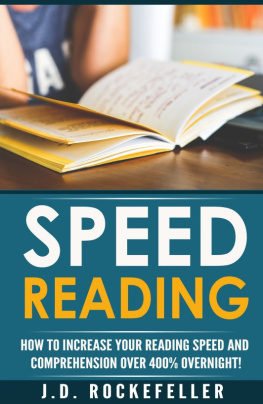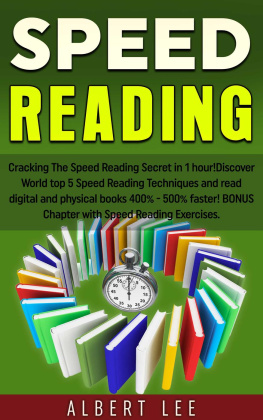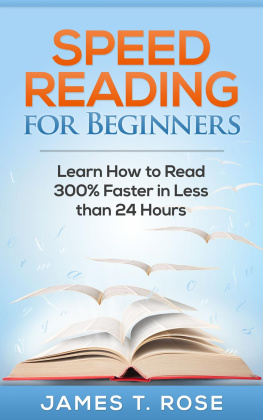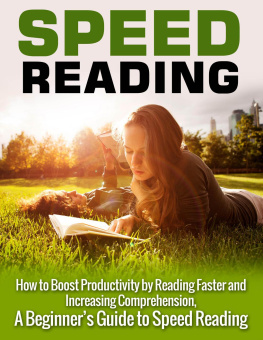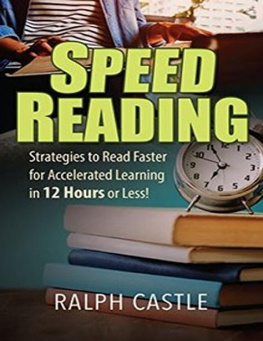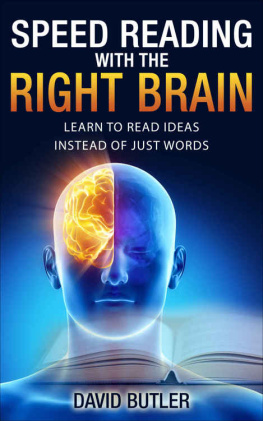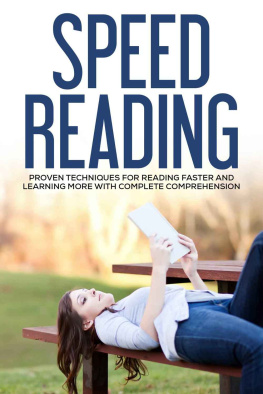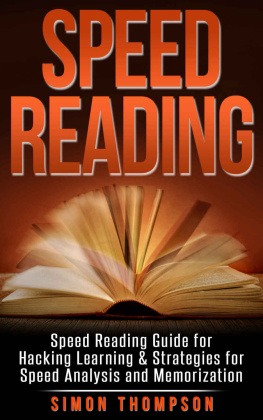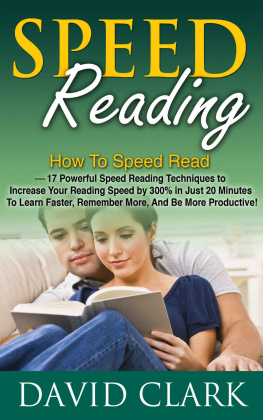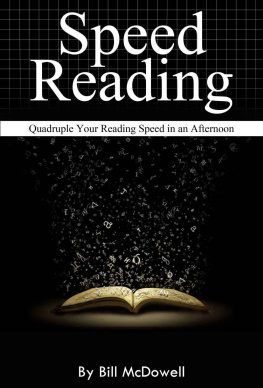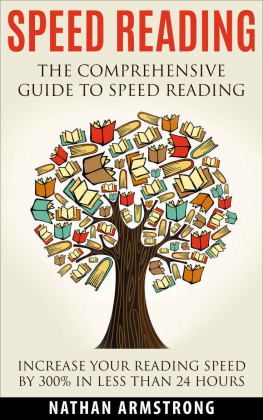Speed Reading
Learn How to Read Twice as Fast,
and Understand Better
Table of Contents
Copyright Notice
Copyright 2015 by Mike Hughes - All rights reserved.
This document is geared towards providing exact and reliable information in regards to the topic and issue covered. The publication is sold with the idea that the publisher is not required to render accounting, officially permitted, or otherwise, qualified services. If advice is necessary, legal or professional, a practiced individual in the profession should be ordered.
- From a Declaration of Principles which was accepted and approved equally by a Committee of the American Bar Association and a Committee of Publishers and Associations.
In no way is it legal to reproduce, duplicate, or transmit any part of this document in either electronic means or in printed format. Recording of this publication is strictly prohibited and any storage of this document is not allowed unless with written permission from the publisher. All rights reserved.
The information provided herein is stated to be truthful and consistent, in that any liability, in terms of inattention or otherwise, by any usage or abuse of any policies, processes, or directions contained within is the solitary and utter responsibility of the recipient reader. Under no circumstances will any legal responsibility or blame be held against the publisher for any reparation, damages, or monetary loss due to the information herein, either directly or indirectly.
Respective authors own all copyrights not held by the publisher.
The information herein is offered for informational purposes solely, and is universal as so. The presentation of the information is without contract or any type of guarantee assurance.
The trademarks that are used are without any consent, and the publication of the trademark is without permission or backing by the trademark owner. All trademarks and brands within this book are for clarifying purposes only and are the owned by the owners themselves, not affiliated with this document.
Disclaimer
While all attempts have been made to verify the information provided in this book, the author does not assume any responsibility for errors, omissions, or contrary interpretations of the subject matter contained within. The information provided in this book is for educational and entertainment purposes only. The reader is responsible for his or her own actions and the author does not accept any responsibilities for any liabilities or damages, real or perceived, resulting from the use of this information.
Introduction
You might be asking yourself right now, "Why should I speed up my reading speed? Why should I want to speed read? Reading is supposed to be a pleasurable activity. It's not a race!" At first thought, these arguments may sound convincing. Ask anyone to imagine someone reading a book, and most likely the scene will include a couch or bed, comfortable clothing, and food or a hot drink on the side. We are all familiar expression "curl up with a book", and who can resist getting "lost in a story"?
So why would anyone want to push themselves to read at a speed any faster than they are already comfortable with? The answer is a compound one and takes into account three basic goals many of us have, and which apply to numerous facets of life: to save time, to increase knowledge, and to be successful.
With the development of modern printing methods and the advent of computers and other digital technology, the amount of readable text in all its forms available to the human race has been immeasurably compounded. Tony Buzan, inventor of "Mind Mapping" techniques, writes: The early development of speed reading can be traced to the beginning of the century, when the publication explosion swamped readers with more than they could possibly handle at normal reading rates."
Indeed, our modern world has become flooded with printed and digital reading material. We are bombarded with everything from ads and social media posts, to news and scientific reports, and just can't seem to find enough time to read everything we want to or should. Students and many professionals have to read assigned material by set deadlines, and the stress of having to swallow and digest huge amounts of information at a dizzying speed often turns reading from something that should be pleasurable into what feels like pure torture.
But if you want to write a top grade thesis, produce a convincing financial report, or make sound medical or political decisions, you must read as much as you can on the subject matter at hand, and read it as quickly as you possibly can. Information can change from day to day, or even by the hour, and being well informed can earn you esteem. The world today is very competitive, and people with the most knowledge about any one subject earn reputations as experts. To maintain your footing in the modern career world, you have to be able to read well and "well" in our day and age means "fast".
Like the question "Which came first, the chicken or the egg?", we cannot really be sure whether successful people have made names for themselves in the merit of being able to read and process large amounts of information quickly, or whether the fact that they are in general successful and highly skilled has contributed to their ability to increase their reading speeds.
Some famous Presidents who were also speed readers include: Theodore and Franklin D. Roosevelt, John F. Kennedy, and Jimmy Carter. After taking classes in the Baltimore in the 1950's when speed reading was still a rather new concept Kennedy was able to increase his reading speed from 300 to 1200 words per minute. He attributed this achievement to his ability to read large groups of words at once.
While reading faster won't help you comprehend faster, people who read more in general have higher reading comprehension levels to begin with and that may indirectly affect their ability to increase their reading speeds without compromising on their ultimate understanding the text. On the other hand, it has been proved that reading at too slow a pace actually hampers comprehension. Tony Buzan explains in his writings why slow readers may have trouble understanding what they read. He used the example of a movie clip to illustrate his theory. Movies consist of still images that are flashed in rapid succession, which in turns creates a simulation of movement.
If you play a film in slow motion, frame by frame, then the sense of movement is lost and the meaning becomes less clear. Unless you are a police investigator searching for minute details to solve a crime, there is no reason you would want to see each frame of a film individually. The same goes for reading. If you read each word as a separate entity, by the time you reach the end of a paragraph you may have missed out on the meaning altogether. In order to understand text, there has to be an unbroken flow while reading at least at the speed of normal conversation.
No matter what your reading level is, you can increase your reading speed with consistent practice, using a variety of tools and exercises explained in this book. Keep in mind that the purpose of increasing your reading stress is to relieve stress not to increase it. Like any exercise regime, it is important to start slowly, and gradually increase your duration and speed. And as all good athletes know, it is also important to sometimes slow your pace, and simply enjoy what you are doing. Speed reading should be viewed as a means to achieving other goals, and not as an end in itself.


